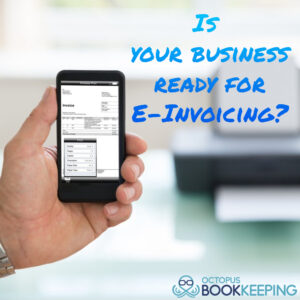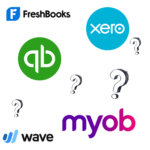What’s e-invoicing and PEPPOL?
E-invoicing or electronic invoicing is the automated exchange of invoice information using a preset electronic format that increases efficiency, lowers costs, and speeds up payment of supplier invoices. In Australia and New Zealand, e-invoicing is based on the internationally successful platform called PEPPOL (Pan European Public Procurement On-Line).
The PEPPOL project, which began in 2008, intends to simplify cross-border electronic procurement by defining technical standards that all European governments might use. The main goal is to allow firms to engage electronically with any European government agency during the procurement process, increasing efficiency and lower costs.
The Australian and New Zealand governments declared in February 2019 that they would adopt the PEPPOL framework for e-invoicing to help firms prosper in the trading environment across the world.
What’s the purpose of e-invoicing in Australia and New Zealand?
Australian government entities are using e-invoicing to return money to businesses significantly faster. The Australian government has agreed to pay invoices received through the PEPPOL network within five days; this will boost suppliers who are now waiting for payment for up to 35 days or more.
Businesses who choose to use e-invoicing will discover that doing business with their customers and suppliers will be considerably faster and easier. Through automation, e-invoicing significantly lowers invoice processing cycles, allowing buyers to negotiate discounts based on quick payment terms with suppliers.
It also decreases the risk and cost of traditional invoice processes. For example, processing a paper or PDF invoice takes roughly $30 in administrative time, whereas processing an e-invoice takes less than $10. Furthermore, e-invoicing decreases the danger of duplicate and fraudulent invoices, common with manual processes and email invoicing.
In Australia:
- · More than 1.2 billion invoices are exchanged each year.
- At any given time, small businesses are owed AU$26 billion in unpaid invoices.
- 89% of small and medium-sized enterprise (SME) invoices are manually processed.
- Over the next decade, e-invoicing is expected to save the Australian economy by AU$28 billion.
In New Zealand:
- · Late payments have an impact on over 80% of all New Zealand firms.
- 28% of payments are past due by more than a month.
- Electronic invoicing has the potential to save New Zealand businesses up to NZ$4.4 billion each year.
Comparison of e-invoicing to other payment methods
Processing invoices via email or in a similar manner is not the same as e-invoicing.
True e-invoicing is a secured computer-assisted process that transfers an invoice in a pre-defined electronic format from the supplier’s billing system to the client via an e-invoicing platform access point.
It eliminates the need for data entry and the possibility of data inaccuracies and saves both buyers and suppliers time and money on manual invoice processes.
A network purchasing system is not the same as e-invoicing.
A payment method is frequently used in a network purchasing solution. Buyers can use purchasing networks to find things and agree on details such as price, quantity, delivery date, and even payment terms. By managing the payment on behalf of the buyer, much of the accounts payable job is automated, giving more control and efficiency in the source-to-pay process.
A PEPPOL platform does not provide e-invoicing features to a purchasing network. In contrast, the e-invoicing platform can be used independently of the existing purchasing network or integrated.
Advantages of e-invoicing
E-invoicing has several advantages for both buyers and suppliers, including:
- Significantly reduces invoice processing cycles through automation, allowing suppliers to be paid faster and buyers to negotiate discounts based on quick payment terms.
- Lowers the cost and risk of manual invoice procedures; for example, processing a paper or PDF invoice takes roughly AU$30 in administrative time, but processing an e-invoice takes less than AU$10.
- Reduces the risk of error because data passes from the supplier’s billing system to the buyer’s receiving system more accurately and comprehensively. The universal standard for e-invoicing guarantees that critical data is entered correctly before an invoice is sent and that invoice information is exchanged consistently.
- Eliminates the danger of duplicate invoices and fraud associated with manual processes and email invoicing.
- It saves money on the cost of invoice storage and retrieval because no paper is needed.
- Facilitates cross-border transactions to boost growth by allowing businesses to securely send e-invoices to participating international business partners while maintaining the same invoice processing speed with domestic transactions.
- Improves cash flow management by gaining access to additional financial choices via accurate and near-real-time visibility of expense payments, promoting more efficient supply chain financing and boosting working capital and liquidity.
- Attains scalability and agility via near-real-time data insights that also assist organizations in better monitoring and reporting on program and business performance.
- Enhances governance as invoice management increases transparency.
- Safeguards invoice procedures, lower cyber attack dangers and protect the company’s financial data (E-invoices are delivered from the supplier to the buyer using an e-invoicing platform, which protects financial information. It also eliminates the possibility of invoices being compromised because they are saved in the e-invoicing system, preventing data loss that is common with emailed and manually handled invoices.).
- Enhances sustainability by lowering energy use and eliminating the need for paper-based forms.
Trade with many with one connection
E-invoicing allows all businesses to open their networks and trade with a wide range of partners regardless of size or financial software. E-invoicing is the key to borderless, rapid, and secure trading.
Eco-friendly
E-invoicing is environmentally friendly since it eliminates paper use, requires no physical storage space or resources, and uses less energy. Removing paper-based invoicing saves more money and decreases environmental impact by eliminating paper, printing (including printer cartridges), and delivery expenses.
How e-invoicing and PEPPOL work
Businesses in Australia and New Zealand who want to use e-invoicing must sign up with an e-invoicing provider.
Suppliers generate an invoice using e-invoicing from their CRM or billing system. Then, through PEPPOL, the invoice is converted to the appropriate format and uploaded to the e-invoicing network via an access point. Because the network recognizes the customer, the invoice is automatically forwarded to the customer after loading.
The consumer obtains or downloads the invoice from their access point and changes it into an accounting software-friendly format. Suppliers and buyers can utilize the e-invoicing system to transfer invoice and payment information more quickly between their accounting systems, regardless of whatever accounting software they use.

source www.peppol.eu
Significance of PEPPOL
Because it is a proven and secure framework that has been successfully utilized in 34 countries for over 12 years, the Pan European Public Procurement On-Line (PEPPOL) platform has been selected as the basis for e-invoicing in Australia and New Zealand.
It is built on open standards and is compatible with other systems. PEPPOL is an open network that enables suppliers and buyers to communicate information securely and is governed by a well-established regulatory framework.
PEPPOL adheres to international standards and allows for scalability. It also has an extensive network of established suppliers with a wide range of expertise and experience across all industries.
What happens if my company does not implement e-invoicing?
Businesses who do not use e-invoicing run the risk of:
• increased fraud and cybersecurity threats from manual processes
• continuous costs of manual processing
• longer payment cycles that delay cashflow
• less flexibility to negotiate reductions based on quick payment terms
• difficulty complying with changing legislation and regulatory standards
• loss of commercial opportunity to a rival who has implemented e-invoicing
Three steps on e-invoicing and PEPPOL adoption
Before implementing an e-invoicing solution, there are three things to keep in mind:
1: Software integration ability with existing IT systems and procedures
The software’s ability to integrate with its existing IT systems and invoicing procedures helps enable quick employee adoption and a smooth transition to the new technology. Determining how the software will integrate with existing systems and procedures before implementation will help avoid any problems that could increase operational costs and risk during the transition to e-invoicing.
2. Compatibility across e-invoicing and non-e-invoicing suppliers.
It may take some time for all businesses to implement e-invoicing, and some smaller enterprises may rely on manual processing for the foreseeable future. The e-invoicing software your company employs must be compatible with all of your suppliers, regardless of whether or not their company uses e-invoicing software.
3. Level of experience that the e-invoicing software vendor has in your business.
Before choosing an e-invoicing company, it’s critical to conduct your homework. While there are numerous providers, it is critical to completely comprehend what each one can and cannot supply with their product. Consider taking into account their level of compliance experience in Australia and New Zealand.
With these factors in mind, there are four distinct steps to e-invoicing adoption:
Step 1: Define the project scope
The shift to e-invoicing necessitates buy-in from all departments involved in receiving or sending bills on behalf of the company. Procurement, finance, project management, and line of business managers are all examples of this. As a result, an e-invoicing deployment should have a project sponsor who is ultimately responsible for the implementation’s direction and management. Finance, IT, or a mix of the two may be in charge of this.
The first stage is to define the project’s scope and goals for the new e-invoice system. Because the project scope and objectives will directly influence the ultimate output, this is a vital phase that must be determined before e-invoicing adoption.
Factors included in the project scope are the following::
- Identifying all parties affected by the change, such as suppliers, customers, shared services, and personnel involved in invoice processes
- A review of how the company presently processes invoices, including the procedures and systems in place to make the switch to e-invoicing
- An examination of the number of invoices sent and received, as well as the frequency and cost of invoicing. This will assist the company in determining the e-invoicing solution’s estimated return on investment.
- Any invoicing-related training and change management required for workers
- How to integrate e-invoicing with existing IT systems and the impact on current systems.
- A shortlist of e-invoicing service providers who can give the best solution and strategy for the company’s needs.
- The project’s budget and schedule for completion. If the company is unsure, an experienced e-invoicing system provider can help with realistic pricing and schedules for the project.
The organization is ready to implement e-invoicing after the project scope and objectives have been specified.
Step 2: Choose the best e-invoicing option for you.
While PEPPOL open standards underpin e-invoicing, it is not a one-size-fits-all solution. The best e-invoicing system will interface easily with your company’s existing applications and provide numerous benefits across e-invoicing and non-invoicing suppliers. The selected e-invoicing solution should immediately provide a return on investments such as shorter payment cycles, a significant reduction in manual processing, and improved administrative savings.
This step involves a thorough review of a select number of e-invoicing software providers and examining and finally selecting the optimal e-invoicing partner.
E-invoicing software providers must convert paper-based invoices to e-invoices and vice versa at the primary level. They must also have relevant experience with the countries’ legal frameworks, particularly concerning e-invoicing compliance. Most accounting systems would be compatible with the e-invoicing solution or may require minimal adaptation.
It’s a good idea to double-check with your desired e-invoicing software provider to see what’s needed for your company’s specific activation process. The activation process will vary between service providers in terms of commercial terms and processes; therefore, it’s critical to work with a reputable software partner.
The next stage is to implement e-invoicing after selecting and validating an e-invoicing solution partner.
Step 3: Implementation of e-invoicing
This step entails alerting all affected parties, such as suppliers and employees, and training personnel to utilize the e-invoicing platform. The selected e-invoicing solution partner will assist the company in developing an e-invoicing implementation roadmap, which will contain timetables, milestones, and transition requirements.
The e-invoicing solution partner will guide the organization through the implementation process. This guidance should include onboarding trading partners into the system, training personnel on e-invoicing, and putting the platform through its paces with essential suppliers.
Step 4: Evaluate and improve the e-invoicing system.
Following the installation of an e-invoicing system, the company must examine the initial project scope and objectives to see if the e-invoicing solution meets the company’s expectations. This step involves identifying issues and rooms for improvement and working with your e-invoicing solutions partner to improve and optimize the e-invoicing system.
Tips for getting the most out of an e-invoicing system
There are specific critical considerations to make while planning, installing, or improving an e-invoicing solution to maximize the return on investment:
a. Have a well-thought-out strategy for long-term success.
When it comes to e-invoicing, one of the most common pitfalls is choosing the cheapest or quickest option; satisfying immediate organizational demands without considering the long-term goals and regulatory or market changes.
Set specified, measurable, attainable, relevant, and time-based (SMART) goals with longer-term objectives in mind when establishing or revising an e-invoicing system; future-proofing the e-invoicing solution and providing the best return on investment.
b. Ascertain that the data is accurate.
E-invoicing, like any other solution, is only as good as the data it is accessing. Before loading data onto the e-invoicing platform, ensure that all trading partners and relevant stakeholder data are updated and sanitized. Removing data gaps will make the shift to e-invoicing seamless and faster. It will also help the company operate smoothly over the internet.
c. Engage an e-invoicing expert
Even for organizations with a well-resourced and experienced IT team, hiring e-invoicing professionals to transition and manage the e-invoicing platform is far more cost-effective and far less risky. This is because e-invoicing providers have an extensive understanding of both short- and long-term e-invoicing consequences regarding cost, risk, and compliance. The system must continue to satisfy changing business, compliance, and regulatory needs after the initial e-invoicing transition. Trying to manage e-invoicing in-house and existing business requirements places a lot of strain on the IT team. This can result in costly blunders or lost opportunities to improve the solution’s process and cost-efficiency. An e-invoicing solution partner will constantly endeavor to improve the solution to maximize the organization’s return on investment.







